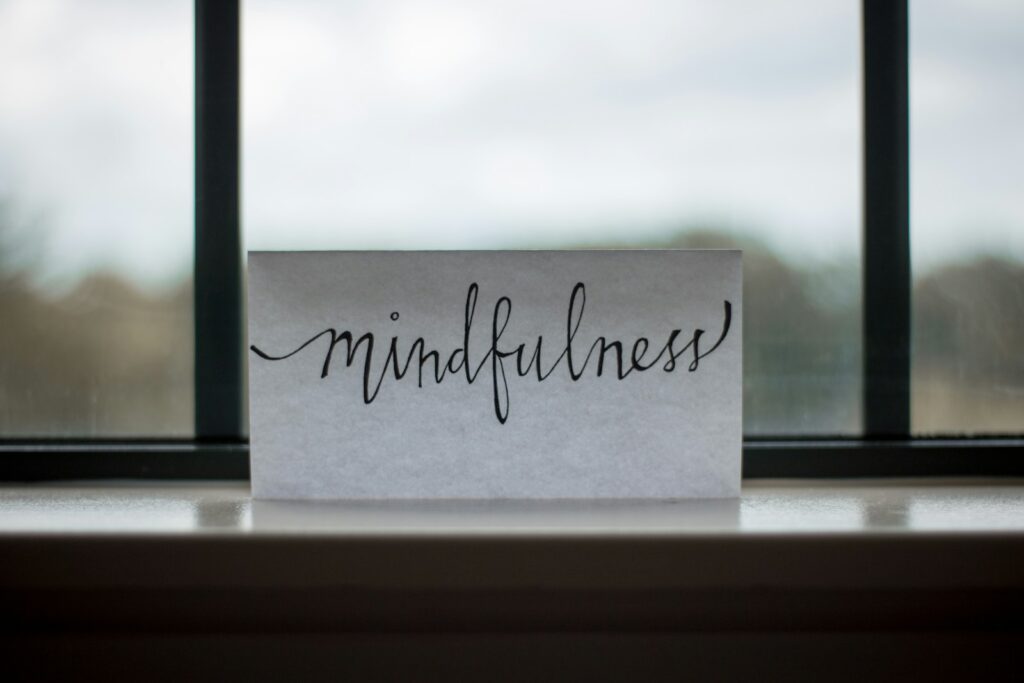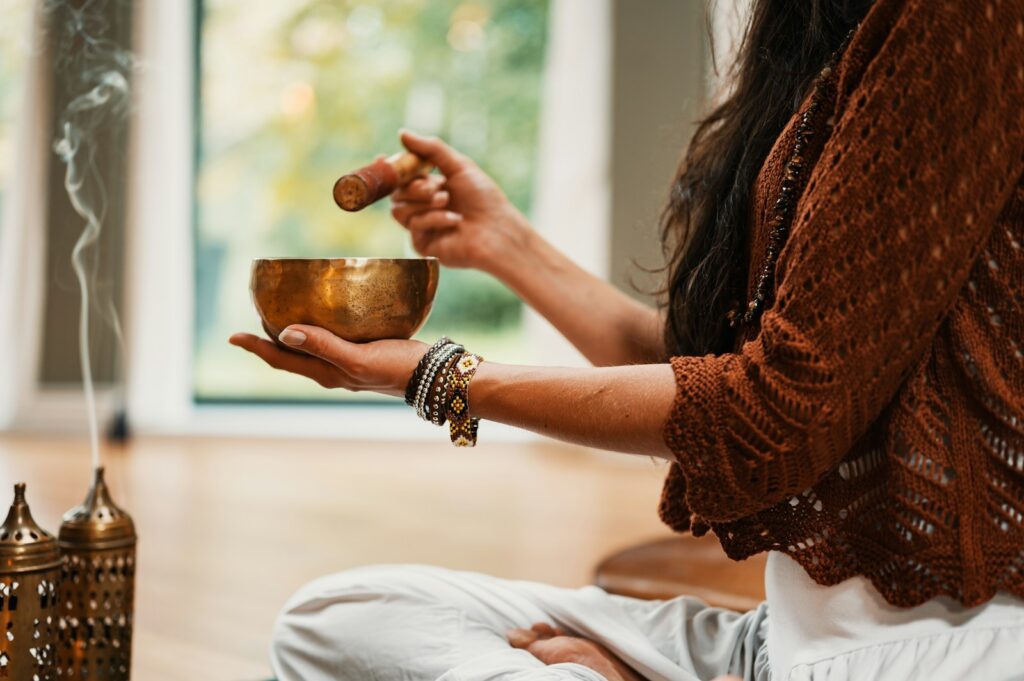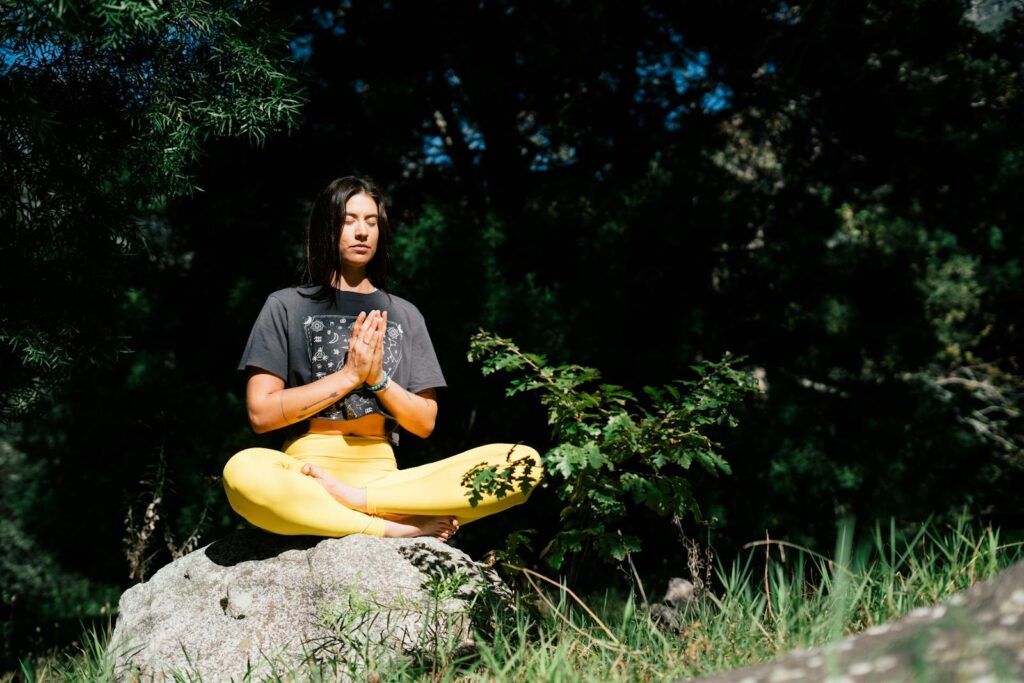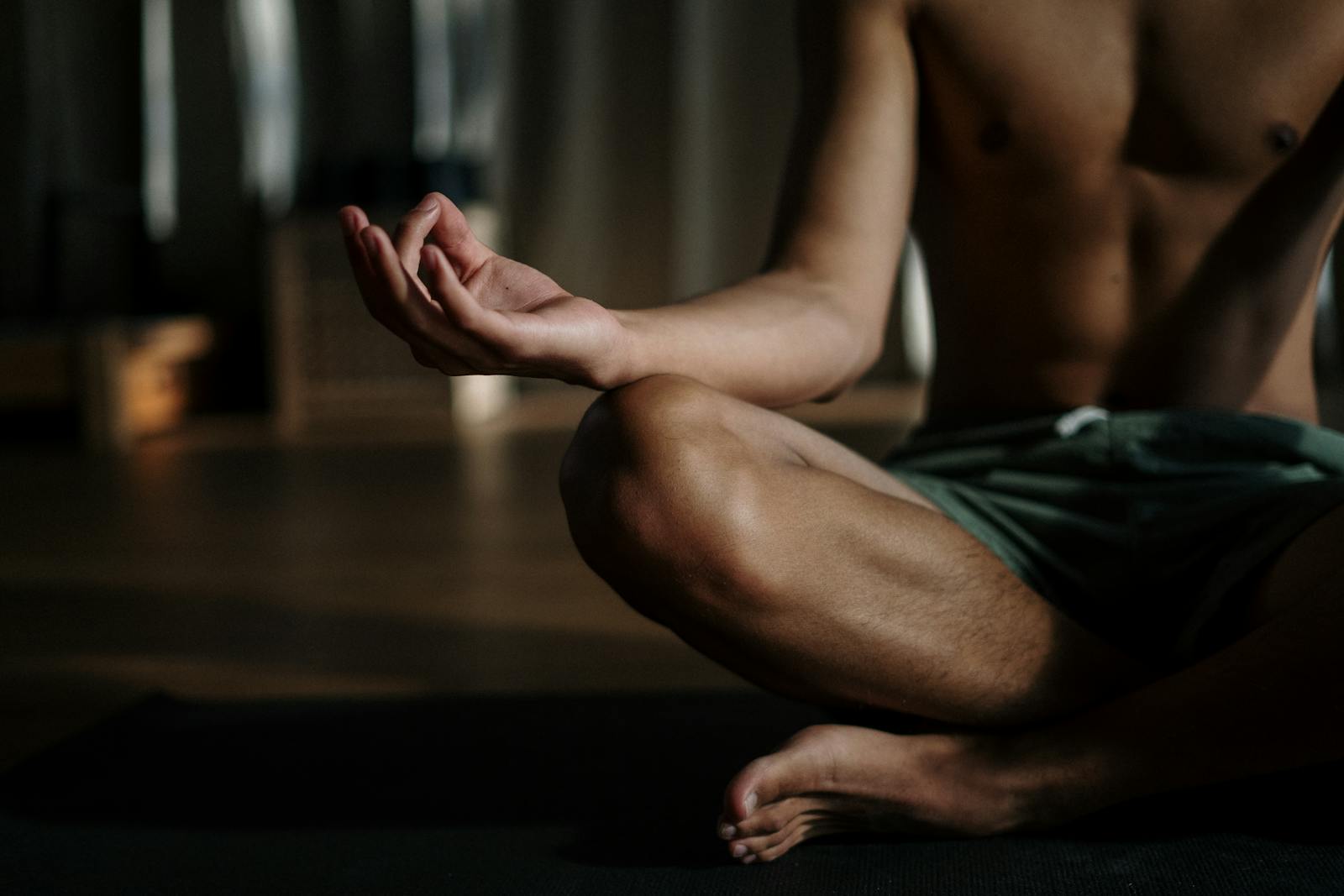Integrating a daily meditation practice into your routine can have innumerable advantages for your mental, emotional, and physical well-being. Whether you’re a novice hoping to start your meditation process or somebody who has fiddled with the practice previously, this bit-by-bit guide will assist you with fostering a daily meditation practice that suits your way of life and inclinations.

Track down a quiet space: Pick a comfortable spot where you will not be upset, whether it’s the edge of your bedroom or a serene fix on your terrace.
To effectively foster a daily meditation practice, it’s vital to find a quiet space where you can completely submerge yourself in the practice with next to no disturbances. This space ought to have a comfortable and calming climate that permits you to focus exclusively on your meditation with next to no external distractions.
- While choosing your meditation spot, consider picking a space that you can devote exclusively to your practice. This could be a side of your bedroom, a quiet niche in your lounge room, or even a tranquil fix on your terrace if weather conditions permit. The key is to pick a spot that feels ideal for yourself and where you feel most settled.
- It’s essential to create a consistent meditation space that you can get back to every day. This feeling of routine can help signal to your cerebrum that now is the ideal time to meditate and assist you with getting into the right mindset for your practice. By making an assigned meditation space, you can start to construct a feeling of calm and focus each time you enter that space.
- Ensure your chosen spot is liberated from clutter or distractions that could haul you out of your meditation practice. If conceivable, attempt to keep your meditation space perfect and clean, with negligible visual improvements that could upset your focus. Consider adding components that assist you with feeling relaxed and quiet, for example, a comfortable pad to sit on, a delicate cover to enclose yourself by, or a calming piece of art to look at.
You may likewise need to consider integrating components of nature into your meditation space, like pruned plants, a small wellspring, or a perspective on the outside. Regular components can help create a feeling of serenity and association with your general surroundings, upgrading your general meditation experience.

Starting Small: Building Up Your Meditation Practice Gradually
Don’t try to meditate for hours a day if you’re just starting out. Start small and gradually build up your practice. Here’s a sample schedule:
| Day | Meditation Time |
|---|---|
| 1-3 | 5 minutes |
| 4-7 | 10 minutes |
| 8-14 | 15 minutes |
| 15+ | 20-30 minutes |

Start with only a couple of moments every day, gradually expanding the span as you become more comfortable with the practice.
Start by saving only a couple of moments every day for meditation. This could be just 5 minutes to start with. Find a quiet and comfortable space where you won’t be upset, like a quiet corner in your home or a tranquil spot outside. Sit in a comfortable position, whether it’s leg over leg on the floor or in a seat with your feet fixed firmly on the ground. Shut your eyes and take a couple of full breaths to focus yourself.
As you start your practice, focus on your breath. Notice the vibe of air streaming all through your noses. Feel your chest rise and fall with each breath in and exhale. Permit yourself to be completely present at the time, relinquishing any distractions or considerations that might emerge.
Assuming your mind starts to wander, tenderly take your consideration back to your breath. Keep in mind that meditation isn’t tied in with clearing your mind totally, but rather about developing mindfulness. It’s typical for considerations to travel every which way; the key is to notice them without judgement and tenderly guide your focus back to the current second.
As you become more comfortable with your practice, steadily increase the length of your meditation meetings. Add an additional little while every day, moving gradually up to 10 or 15 minutes. You might find it supportive to set a clock to monitor the time or utilise a directed meditation application to assist you with keeping focused.

Consistency is key with regards to fostering a daily meditation practice. Attempt to meditate simultaneously every day, whether it’s the most memorable thing in the first part of the day, during your mid-day break, or before bed. By laying out a daily schedule, you’ll be bound to stick with it and make meditation a standard part of your day.
Scheduling Your each day Meditation workout
Consistency is prime to developing a every day meditation workout. Pick out a time of day that works for you, and keep on with it. Here are some tips to establish consistency:
- Begin small with five-10 minute instructions
- Schedule meditation at the equal time every day
- Use a meditation app or timer to stay in check
- Make meditation a non-negotiable a part of your daily routine

Focus on your breath: Utilise your breath as an anchor, focusing on the sensations as you breathe in and exhale.
With regards to fostering a daily meditation practice, focusing on your breath is a fundamental stage. Your breath resembles a solid anchor that you can constantly return to at whatever point your mind starts to wander during meditation.
- Start by finding a comfortable and quiet spot where you can sit or rest without distractions.
- Shut your eyes and take a couple of full breaths to sink into the current second.
- Notice the impression of the air entering your noses as you breathe in and the sensation of your chest growing as you breathe in.
- Focus on the delicate ascent and fall of your mid-region with every breath.
As you keep on focusing on your breath, you might see that your mind starts to wander. This is totally typical and happens to everybody, particularly while starting out with meditation. At the point when you notice that your mind has started to float, tenderly take your focus back to your breath without judgment. Keep in mind that the objective isn’t to stop your considerations totally, but rather to notice them without becoming involved with them.
As you practice focusing on your breath, you might start to see unpretentious changes in your breathing patterns. Your breath might become further and more relaxed, assisting with calming your mind and body. You may likewise turn out to be more mindful of the current second and less distracted by outside boosts.
Growing a Pre-Meditation habit
A pre-meditation habit everyday permits you to put together your frame of mind for meditation. Here are some ideas:
- Take some deep breaths
- Stretch or carry out a bit slight yoga
- Drink a cup of herbal tea
Conclusion
Developing an every day meditation exercise takes time, effort, and dedication. However, the benefits of meditation far outweigh the demanding situations.
Bear in mind, meditation is a journey and not a destination. Be patient and compassionate with your self as you develop your practice. Do not be discouraged through setbacks or barriers – simply view them as opportunities to learn and grow.
FAQ
Q: How lengthy does it take to see the advantages of meditation? A: The blessings of meditation may be evident in as little as 5-10 minutes a day. However, constant exercise over numerous weeks or months can present greater profound and lasting advantages.
Q: Will I be able to meditate if i’ve a busy schedule? A: Yes! Even 5-10 mins of meditation a day may be beneficial. Attempt meditating in the course of your lunch break, before sleeping at night, or first thing in the morning.
Q: What if I go to sleep in the route of meditation? A: Don’t worry! It’s common to become drowsy at some point of meditation, particularly if you’re tired. Try meditating at a time you’re extra alert.
Q: Can I meditate with tune or guided meditations? A: Certainly! Song and guided meditations may be brilliant tools that will help you stay connected and at ease. Test with distinct sorts of song and guided meditations to find what works fine for you.
Q: How do I know if I’m doing meditation “proper”? A: there is no “proper” or “incorrect” manner to meditate. The purpose of meditation is to cultivate cognizance, kindness, and compassion. Consciousness to your breath, body, or selected meditation item, and gently bring your interest again even as your mind wanders.





